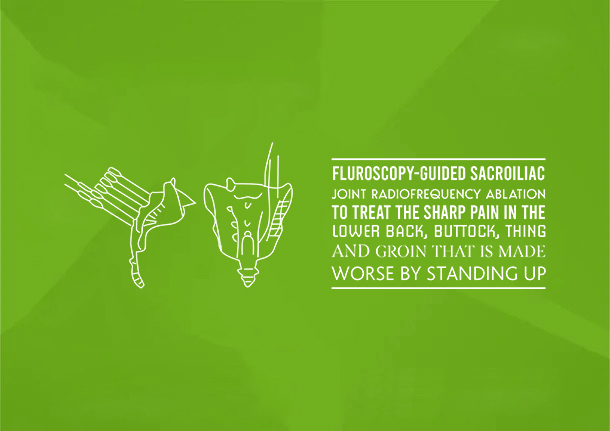

Treatments
ABDOMEN & PELVIC PAIN

Sacroiliac Joint Radiofrequency Ablation
What is sacroiliac joint radiofrequency ablation?
For Sacroiliac joint pain that is chronic and does not respond to conservative treatments like physical therapy, a treatment option called radiofrequency ablation is used. Radiofrequency ablation, also called a radiofrequency neurotomy, is a minimally invasive procedure that introduces radiofrequency waves and heat to stun the nerves surrounding the Sacroiliac joint that is causing pain. These nerves do not control the muscles or other sensation in the arms or legs, so treating them with radiofrequency ablation poses little risk.
How is Radiofrequency Ablation of Sacroiliac joint performed?
At Atlas Pain Care, you will be asked to lie on your stomach in the procedure room. The skin over the joint is cleaned with antiseptic solution and is injected with local anaesthetic, after which the nerves supplying the sacroiliac joint are blocked with injections performed under X-ray/ultrasound guidance.
The needle is inserted into the appropriate site and radiofrequency waves are pulsed through so that the tip of the needle is heated. The heated tip of the needle is then used to create a heat lesion on the nerve that carries the Sacroiliac joint pain. Once this process has been completed, it is repeated for each nerve suspected to be causing pain.
Is Radiofrequency Ablation Successful in Treating Sacroiliac Joint Pain?
Radiofrequency ablation success rates can vary widely. There are many nerves in and around the SI joint, and disabling all of them can be very difficult. However, approximately 30% to 50% of people who undergo the procedure for lower back pain may experience substantial relief for up to two years. Of the remaining people who undergo the treatment, about 50% will experience some level of pain relief for a shorter period of time.
Please read our FAQ section to know more about the do's and don'ts prior to and after the procedure.

